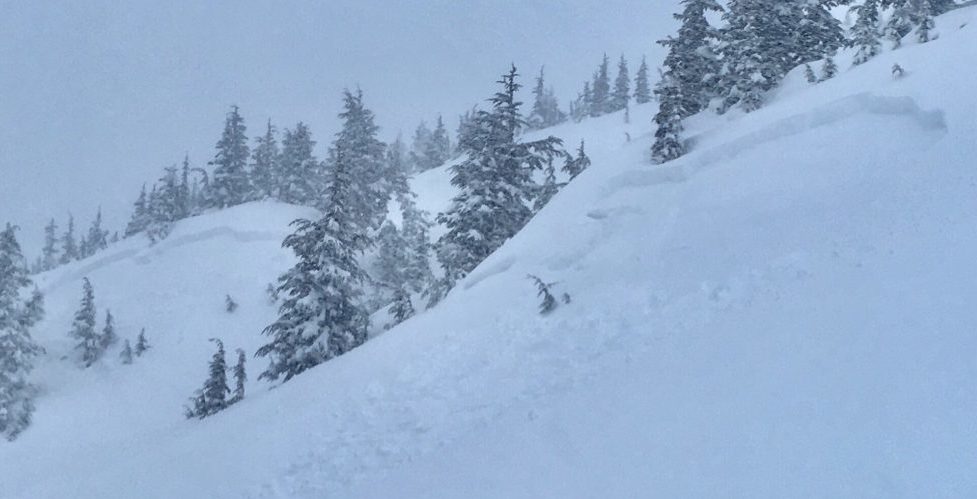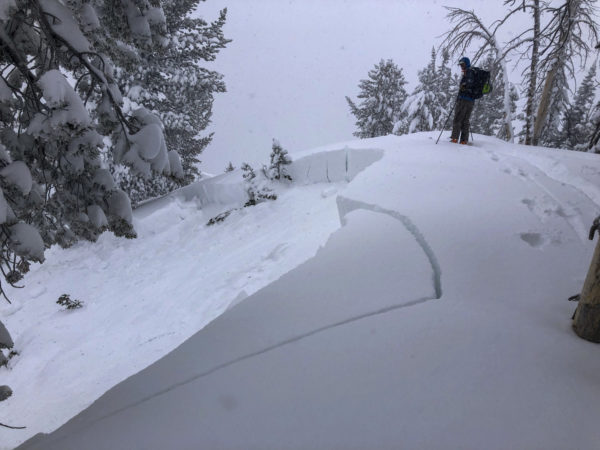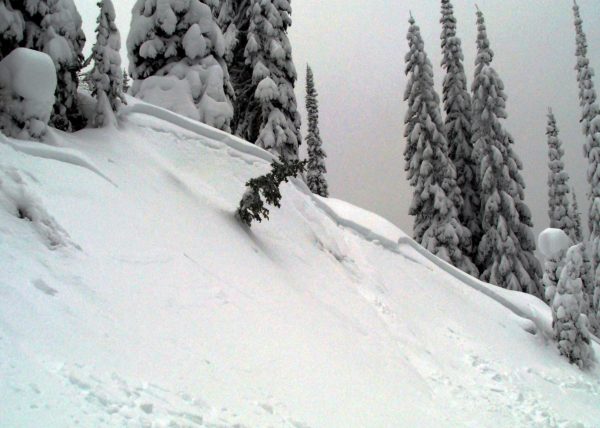Release of a soft cohesive layer (a slab) of new snow that breaks within the storm snow or at the interface between new and old snow.
Depending on the storm characteristics and snowfall amounts, the problem can vary from a thin, relatively harmless soft slab to a much thicker, harder, and more dangerous slab. Storm Slab problems typically last between a few hours and a few days and are commonly distributed widely across terrain that received similar snowfall amounts. To assess potential size, monitor storm totals and expect deeper accumulations at higher elevations and in leeward terrain. Look for feedback, such as shooting cracks, on small, steep test slopes. Shallow Storm Slabs are most dangerous on larger terrain features or slopes with terrain traps, such as trees, gullies, and cliffs. In some cases, Storm Slabs can be remotely triggered. You can reduce your risk from Storm Slabs by waiting a day or two after a storm before venturing into steep terrain. Storm Slabs that form over a persistent weak layer (e.g. surface hoar, depth hoar, or near-surface facets) may be termed Persistent Slabs or may develop into Persistent Slabs, in which case, their instabilities will last longer and their behavior will become more challenging to manage.

Thin Storm Slabs tend to produce more reliable feedback and predictable behavior. Credit: Flathead Avalanche Center



